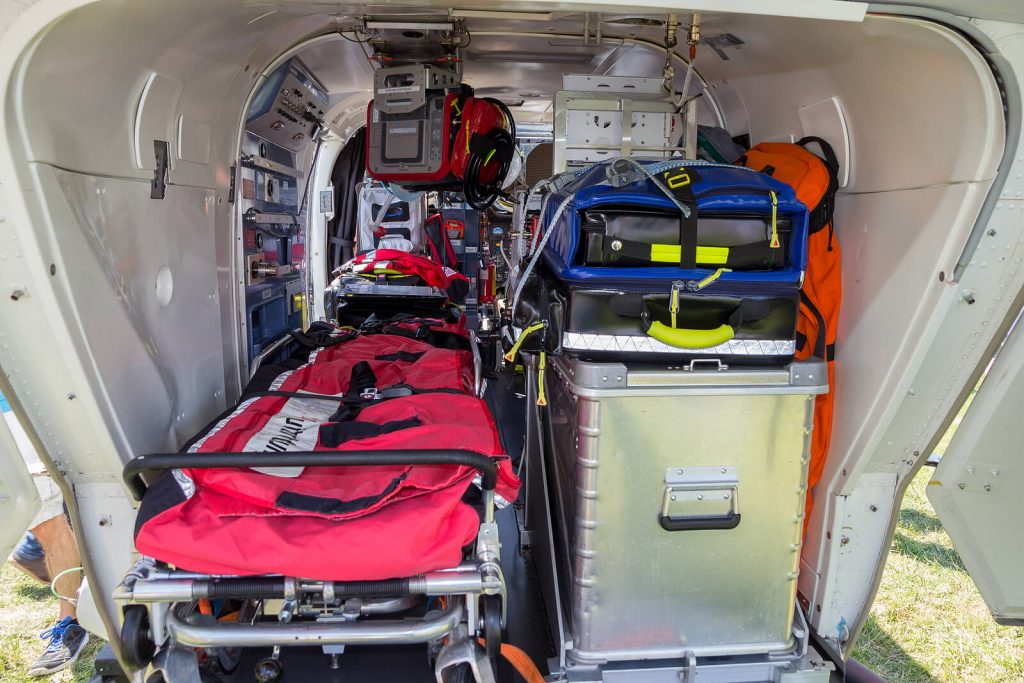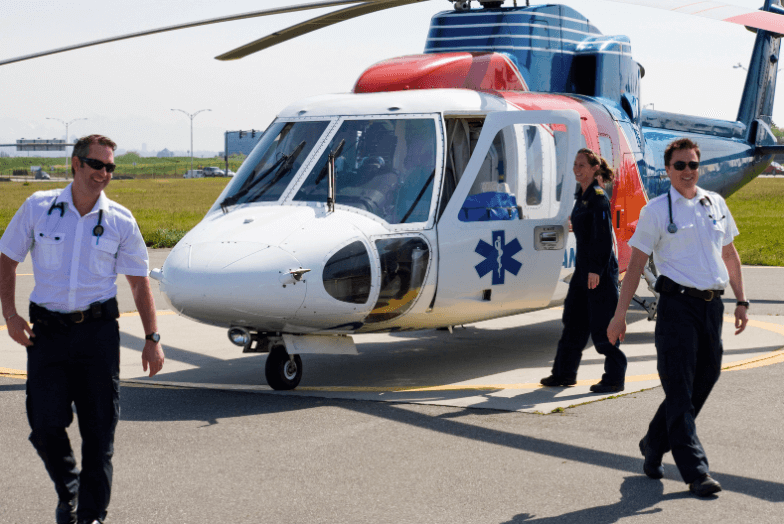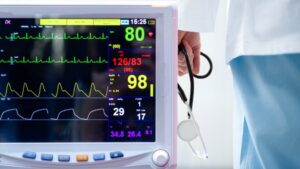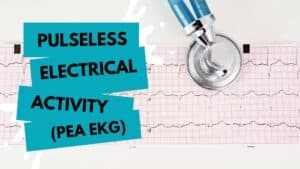There are few careers as intense and important as those of flight paramedics. In this guide, we cover a typical day in the life of these airborne life-savers. For those interested in taking the flight paramedic career path, we also cover flight paramedic requirements and provide info on how to start pursuing the career. Learn more below, and take flight with our team here at SureFire CPR!
Early Mornings and Initial Preparations
For flight paramedics, there’s a lot to prep for each day on the job. Early wake-up times come with the territory, as most flight paramedics must be on base before 7 a.m. There, they complete a number of essential tasks.
First, each paramedic must complete the necessary documentation to confirm that he or she is serving as a flight paramedic for the day. Before and during this confirmation, the pilot of the helicopter is performing vital mechanical checks on the aircraft. Once the pilot has concluded the mechanical inspection, the flight paramedic(s) must check the medical equipment aboard the helicopter. In most cases, this equipment includes a specialized gurney along with all medications and rescue equipment. Alongside this equipment, special brackets and connectors must be checked to ensure that equipment is securely fastened.
Once all checks are completed, the crew will assemble in the station’s waiting room. The next step? You guessed it: waiting. Life as a flight paramedic can be slow at times—but once that first call comes in, it’s full steam ahead.
Taking Calls and Final Preparations
Calls from flight coordinators, who tell the pilot and paramedics where to go and what each flight will entail. For flight paramedics, situations can differ considerably. Sometimes, patients need to be transferred from one hospital to another. Other times, patients need to be life-flighted from an outdoor location such as a ski resort or back-country trail. The environment and the condition of the patient in question both play huge roles in how flight paramedics will complete their final steps of preparation. They may choose to take extra equipment, or they may choose to offload certain items in the interest of weight.
Lift Off
Once final preparations are made and everything is securely fastened in its place in the helicopter, it’s time to take flight. On some bases, helicopters can lift off right where they are. In other situations, helicopters are sitting on skids and must be rolled using special sets of removable wheels to designated lift off locations.
After everyone is buckled in, the pilot starts the engine. The helicopter blades must reach speeds of several thousand RPMs before leaving the ground. During this time, the pilot will confirm flight information with the air traffic controller.
In Flight and Landing

In the air, the pilot will stay in communication with the air controller to stay updated and determine if any circumstances are changing. Depending on the flight distance, one air controller may transfer the team over to another air controller in another airspace. In the air, flight paramedics may receive extra information from the patients from doctors—though this exchange of information is often completed before take-off or after the initial flight has concluded.
The pilot will land the helicopter as close to the patient as possible without compromising the safety of the crew or those nearby the landing area. It takes several seconds for a helicopter to safely land and for the blades to slow down so that passengers can exit.
Treating the Patient
As flight paramedics exit the helicopter, they will often be met by other medical professionals who will brief them on the patient’s condition. In the event that no other life-saving personnel have reached the scene, it is the flight paramedic’s responsibility to administer first aid to the best of their abilities.
Once this initial treatment has concluded, flight paramedics must prepare patients for the flight. For patients coming from hospitals — or those who have received some medical attention — this process involves transferring the patient from his or her current medical equipment to the specialized helicopter flight equipment. This can take several minutes and requires great attention to detail, as it must be performed both quickly and safely so as to not compromise the patient’s condition.
Sometimes, a patient must be driven by ambulance to the helicopter. Other times, he or she can be wheeled or carried from several feet away. In the interest of time, ambulance crews and other professionals may help flight paramedics shuttle and load the patient into the helicopter. From there, the flight paramedic will secure the patient for the flight.
The Way Back
Most paramedic flights don’t immediately return to base. Instead, they take the patient to another hospital or nearby medical center for treatment. This process requires another landing maneuver, and careful unloading of the patient, and a short but thorough meeting with a team of doctors before transferring the patient. This meeting requires flight paramedics to be knowledgeable on the patient’s condition and any changes that may have occurred during the flight. This information can be vital for doctors in the crucial first few hours of treatment.
Back to Base (or Not)
With the transfer complete, flight paramedics may head back to base or fly on to another patient. Together with the pilot, they tune into the flight coordinator to receive their next instructions. This process is repeated for the rest of the day until flight paramedics and the pilot are relieved by the next shift.
How to Become a Flight Paramedic
A career as a flight paramedic is both action-packed and incredibly vital to patients and medical professionals everywhere. If it’s something you’re interested in, now is the time to start. How long does it take to become a flight medic? With no experience at all, several years. For certified Paramedics, significantly shorter.
All prospective flight paramedics must first become certified EMTs, which means they must complete an EMT course and pass National Registry of Emergency Medical Technicians (NREMT) EMT. To gain the necessary experience, they must also work for several years in an EMT position. Finally, many flight paramedics are required to get certified in courses including ACLS, PALS, and NRP—all of which are offered here at SureFire CPR. Follow the links to get started, and enroll with us today!







